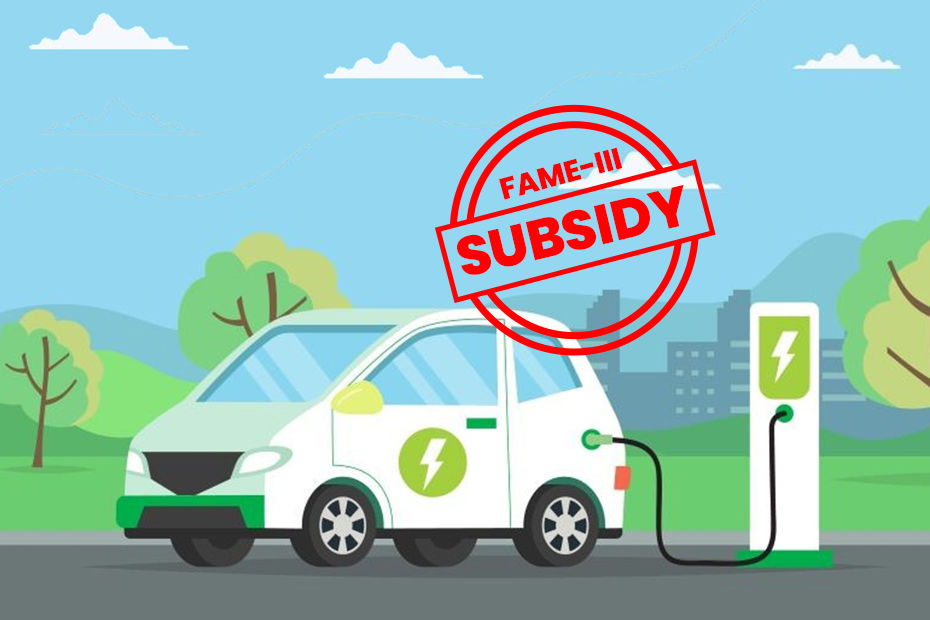FAME Subsidy For EVs Should Be Extended For Another 5 Years: FICCI
Published On Dec 05, 2023 06:30 PM By Rohit
- Write a comment
The trade association states that the scheme will help in achieving the target of 30 percent EV penetration in India

-
The FAME-II scheme was introduced in April 2019 and is effective up to March 2024.
-
FICCI suggests including private EV buyers in the new FAME-III scheme.
-
Penetration of EVs in the Indian market stands at five percent currently.
-
Also suggests considering hybrid vehicles as part of the scheme.
The popularity of electric vehicles (EVs) has been on a sharp rise in our market over the last few years, which is also down to many brands having introduced different models. Before this surge, the central government had rolled out a pan-India incentive scheme called the Faster Adoption and Manufacturing of Hybrid and Electric vehicles (FAME). An updated version, FAME-II, was rolled out in 2019 with a target to sustain the momentum of mass adoption of EVs. However, with the FAME-II scheme ending in March 2024, the Federation of Indian Chambers of Commerce and Industry (FICCI) has put forth a proposal suggesting that the Indian government carry forward the FAME scheme for another five years.
What Has FICCI Suggested?
FICCI says sudden withdrawal or discontinuation of the incentives will lead to up to 25 percent price increase of EVs, dissuading potential buyers and even affecting investment in the field. As per the organisation, EV penetration in the Indian market currently stands at only five percent.

If the incentive schemes continue for the next five years, approximately 30.5 million electric vehicles could be adopted across segments, helping electrify 30 percent of India’s transportation as targeted. FICCI stated that the subsidies could be lowered and eventually discontinued once the price gap between EVs and combustion engines become negligible. This will be achieved as the battery costs continue going down and prices of EV components decrease over the next 3-5 years.
Other Recommendations By FICCI
Besides the above suggestions, FICCI has also shared a few other inputs:
- It has mentioned that all kinds of hybrid vehicles (including strong- and plug-in hybrids) and hydrogen-powered vehicles must be included under the FAME-III scheme.
- FAME-III should focus on extending the benefits to private buyers picking an electric car as well.
- It also highlighted that the calculation of the subsidy should continue to be based on the battery size (per kWh) as currently mentioned in the FAME-II scheme.
Sulajja Firodia Motwani, chairperson, FICCI EV committee, said, “Favourable policies and especially the FAME-II scheme of the Government of India has played a key role in spurring demand by helping to reduce the upfront prices of EVs. This has helped create a positive momentum and encourage EV adoption in the country. However, while we have well begun, we are nowhere close to being half done. Let us not forget that the current price premium of EV vis-à-vis ICE without any subsidy is still substantial, ranging from 40 percent to as high as 130 percent for various segments. Given this reality, the continuation of demand incentive or subsidy is imperative and critical to help reduce this price gap. Fame-III is required to spur continued interest from customers in EVs and increase penetration over the next few years.
Also Read: All The Advantages And Disadvantages Of Buying A New Car At The End Of A Calendar Year
A Recap Of FAME-II Scheme
The FAME-II scheme was introduced in April 2019 and was initially supposed to end by March 2022 but the Indian government pushed back the deadline by two years (due to COVID-19) to March 31, 2024. It covers hybrids and electric vehicles, but mostly tilted to favour the latter.

It had a budget of Rs 10,000 crore to subsidise the cost of buying an electric vehicle. This would cover subsidising 55,000 electric 4-wheelers having Li-ion batteries, 10 lakh electric 2-wheelers, 5 lakh 3-wheelers and 7,000 buses were also eligible for the incentive over a period of three years. In the case of 4-wheelers, incentives have majorly been provided to commercial vehicles and those used for public transportation.
While these are only some of the suggestions made by FICCI, it remains to be seen which of these will be taken into consideration by the Indian government while formulating the FAME-III scheme. Which of these do you think should be included in the final incentive scheme? Drop your answers in the comments.
3 out of 3 found this helpful















